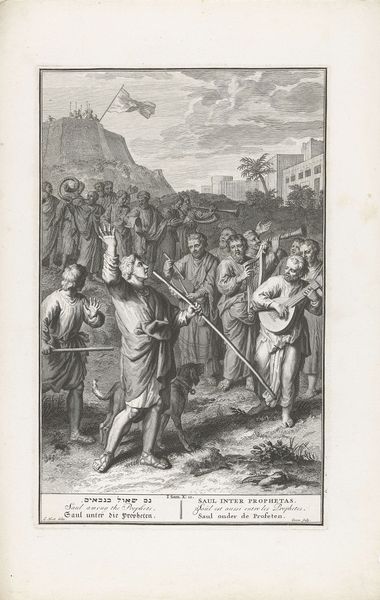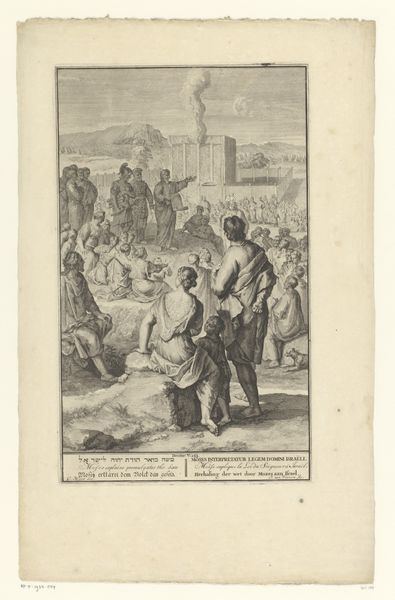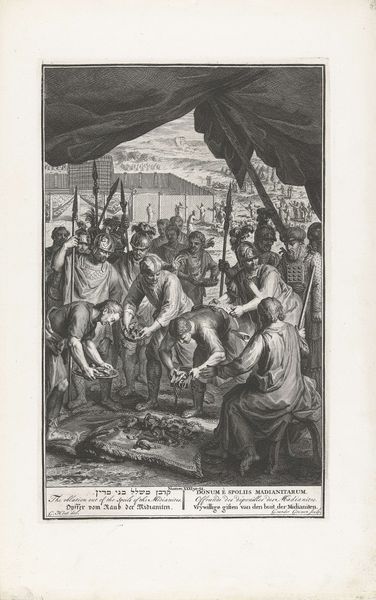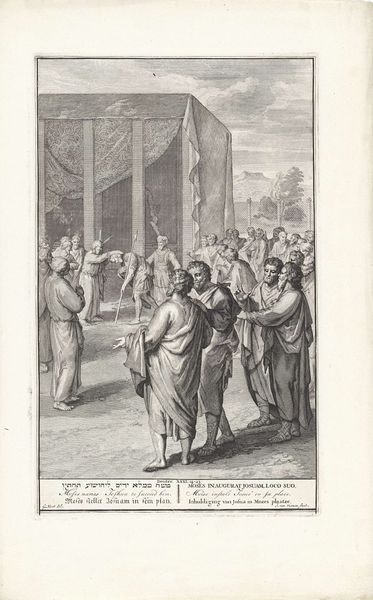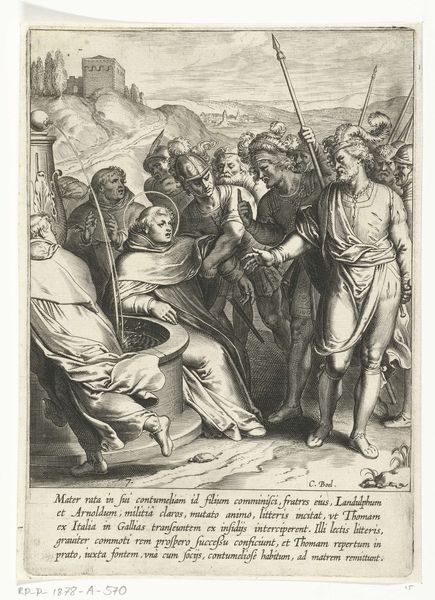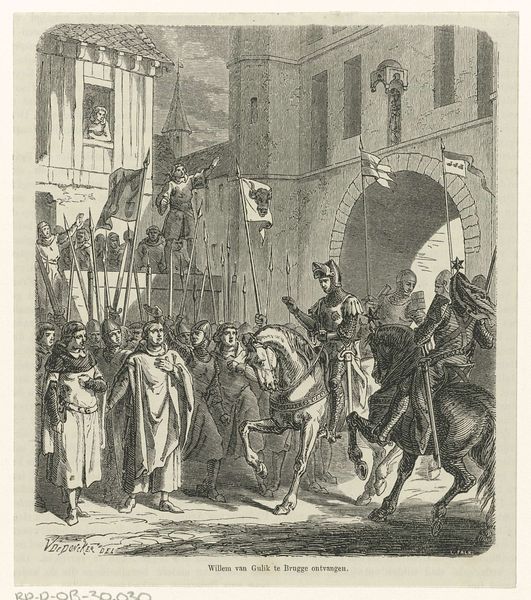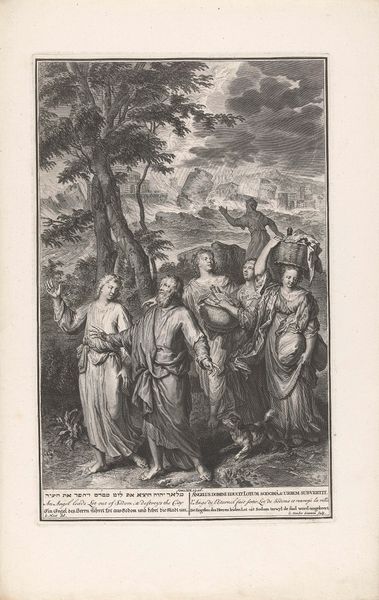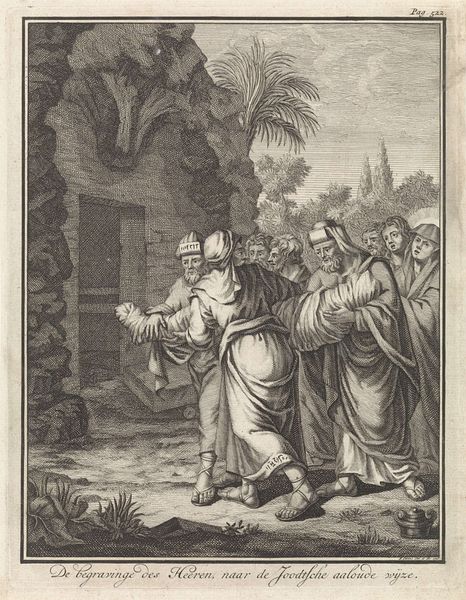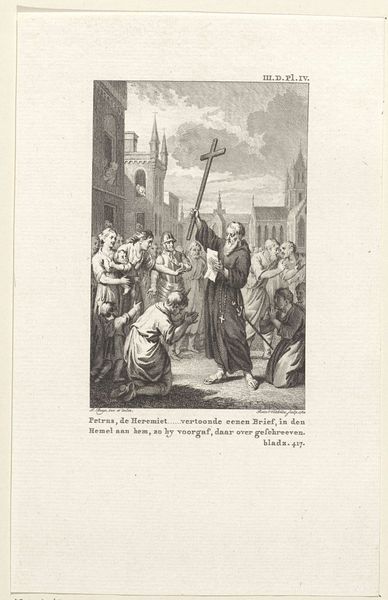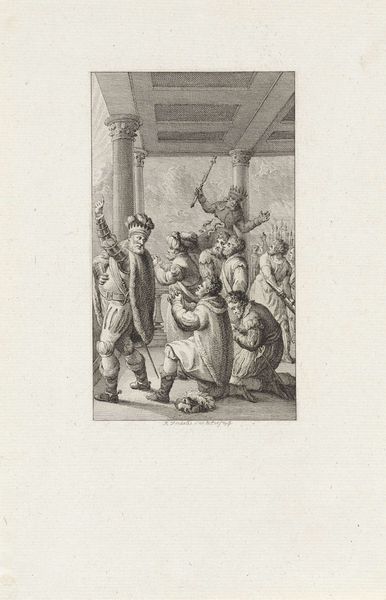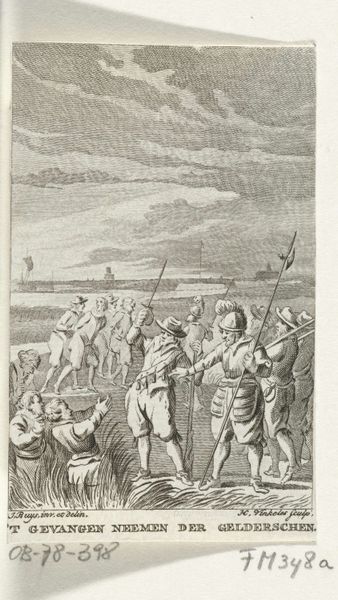
print, engraving
#
baroque
# print
#
old engraving style
#
figuration
#
history-painting
#
engraving
Dimensions: width 220 mm, height 354 mm
Copyright: Rijks Museum: Open Domain
Curator: The Rijksmuseum holds this piece entitled "Lamentation of the Israelites," dating back to 1728. It’s an engraving by Gilliam van der Gouwen. What are your initial thoughts? Editor: It’s striking how dynamic it is, especially considering it's a print. The artist has created a swirling mass of figures. But is that tension, or just theatricality? Curator: Perhaps both. The dramatic poses certainly recall the Baroque style, but those gestures signify deep cultural grief, a collective mourning for Moses. The upraised hands are ancient Semitic gestures of mourning. Remember, Moses is not just a historical figure here, he's a foundational patriarch, a lawgiver. Editor: The formal repetition adds to the chaos. The engraver’s technique is quite refined. Notice how light is handled with the crosshatching, particularly on the figures’ drapery. Yet, this meticulousness also contains an agitation. See how the lines in the ground swirl and how that mountain seems almost animated by the texture? Curator: Precisely, it's not a simple illustration, it is history as collective memory. Look closer at the mountain in the background, and that small gathering. Doesn’t that tiny group by the peak, near what appears to be a small construction, give you a sense of the biblical exodus? It’s like a faded, shared past made real through iconic symbols. The foreground is an amplified reaction of deep sorrow, even despair. Editor: I see what you mean. Those symbols extend even to the architectural structure stage-left. It’s rigid and almost monumental despite it not even taking up a large portion of the frame, serving almost as a barrier for the crowd to huddle around. This isn't about capturing reality so much as conveying an intense, almost operatic emotion through a sophisticated manipulation of form and icon. Curator: An excellent point. And in Baroque art, isn’t that often the true subject—the dramatization of emotions through accessible iconography? Editor: Yes. It has been a really fascinating look at a print that feels so deeply alive. Curator: Indeed. Analyzing how different artistic styles engage cultural narratives reveals a wealth of artistic and historical understanding.
Comments
No comments
Be the first to comment and join the conversation on the ultimate creative platform.
